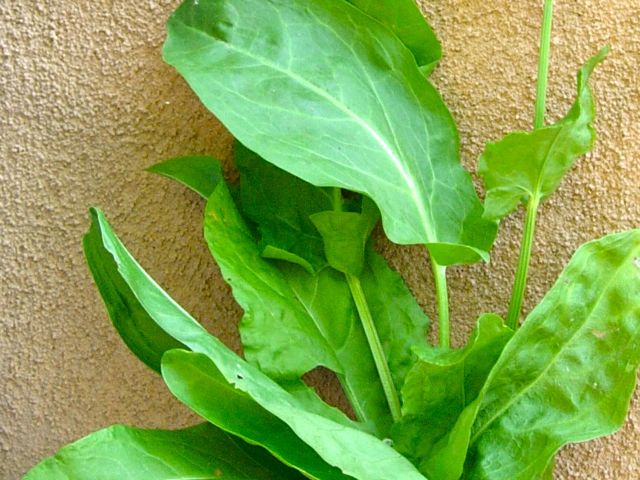
reference-image, l
(article, Deborah Madison)
I love my sorrel plant. When its first tender leaves first appear and I sliver even one or two tiny ones into a salad, their tart bite reassures me that spring will one day come. As I write this, in late May, there’s a luxurious quantity of leaves. Each one comes to a soft point at the top, broadens toward the center, then dips down at the tips, more or less arrow-shaped. A stem runs up the centers and the side veins are visible but delicate. Sorrel leaves are so thin — they feel almost like paper — that they don’t fare well in those plastic herb containers found in grocery stores. And you’ll want to use a lot of sorrel when you do use it, which is why having your own plant makes sense. So, what do with sorrel besides sliver it into salads? Because it is tart and pronounced, sorrel is a good accent herb, brightening foods like potatoes and eggs. Cream and sorrel are divine together, so you might combine them in a sauce or a soup, or flavor cream with sorrel purée to make a savory custard. (Think about salmon with sorrel sauce.) [%image reference-image float=right width=400 caption="Deborah's sorrel."]At Greens, I used sorrel in a sauce to serve with a spinach roulade or with a mushroom timbale. (See The Greens Cookbook for recipes.) You can throw handfuls of chopped sorrel into a potato soup and not go wrong. No matter how much you use, it cooks down to a shadow, but the more you use, the more you’ll see and taste it. Its visuals aren’t great — it’s a drab shade of green — but that shouldn’t matter. Another thing you can do is make a sorrel purée to use as a flavoring. Unless the leaves are new and tender, I pull away the stems by folding the leaves back and running the stems up the center. Then I drop them into a pan with a little butter and cook until the leaves dissolve into a purée. It’s not pretty, but it’s a great asset. I do this at the end of the summer with the last, weathered leaves. I freeze the purée, then during the winter I break off chunks and stir it into root-vegetable soups, mushroom sauces or ragouts, or omelets. It adds a wonderful culinary energy to the quiet flavors of winter foods. p(bio). Deborah Madison is the author of numerous award-winning cookbooks, including Local Flavors. She lives in New Mexico.

reference-image, l